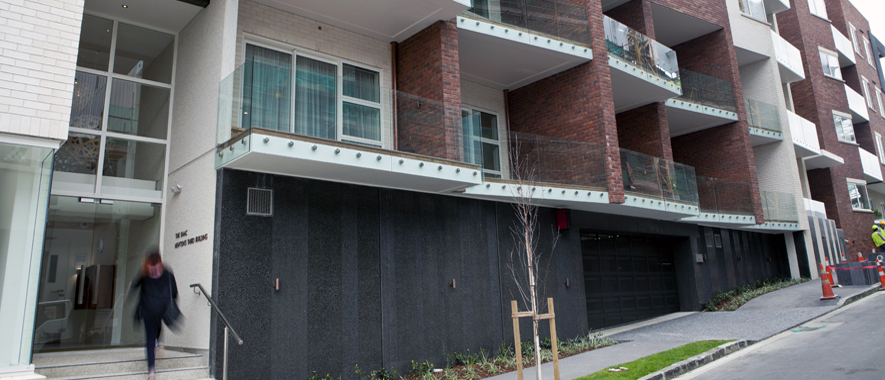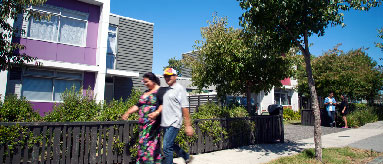Auckland’s population is projected to increase significantly over the next three decades. To accommodate this growth and reach our climate goal of net zero emissions by 2050, Auckland will follow a quality compact urban form approach to growth.
Ara 1: Me whakawhanake te tāone kia kiato, kia kounga hoki te āhua, e taea ai e Tāmaki te tupu tonu i runga i te tukuwaro-iti Direction 1: Develop a quality compact urban form to accommodate Auckland's growth and support a low carbon future

A quality compact urban form approach to growth brings a number of environmental, social and economic benefits and opportunities.
These include:
- enabling more housing to be built in places with good access to jobs, services and amenities, reducing the distance that people need to travel. This creates more time for things that people enjoy and reduces carbon emissions
- improving the cost-effectiveness of delivering infrastructureThe structures, systems and facilities that support daily life such as water supply, roads and communications, including social infrastructure. – such as transport and wastewater – and other services. This also results in the best asset management and infrastructure provision
- reducing car dependency and distance travelled by car and enabling Aucklanders to make sustainable travel choices such as walking, cycling and using public transport
- lower travel costs for people and businesses and increased economic agglomeration benefits
- reducing building emissions due to the different types of buildings that make up more dense cities (e.g. low-rise residential housing such as townhouses consume less operational and embodied emissions The total carbon emissions arising from the construction of a building. It includes emissions from sourcing raw materials, manufacturing, transport, construction and installation activity and wastage in the building and construction process. Further, during their life cycle, the same products and materials also cause carbon impacts when they are maintained, repaired, or disposed of.than standalone buildings (depending on design and material use)
- helps to protect our natural environment and maintain Auckland's rural productivity The capacity of the region for rural production. by limiting urban sprawl.
A quality compact approach to future development will be achieved by:
- enabling sufficient capacity for growth across Auckland
- embedding good design in all developments and new housing
- sequencing and prioritising what gets delivered
- leveraging existing infrastructure investments
- aligning the timing of infrastructure provision with development.
Our Future Development Strategy outlines how development can help us create inclusive, vibrant and resilient communities by following a quality compact approach.










